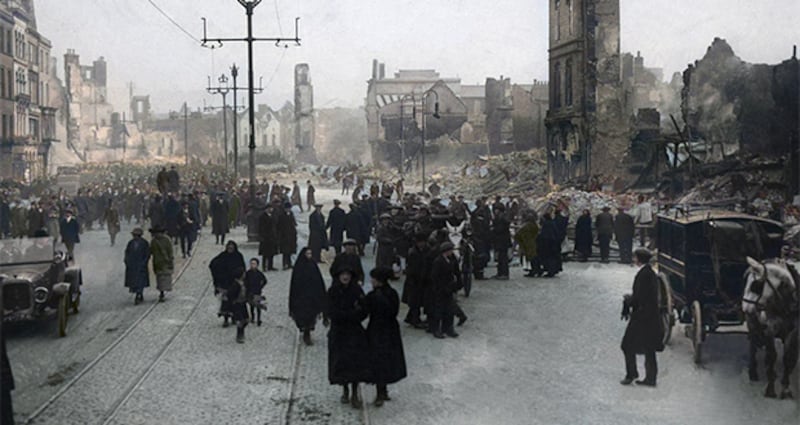The War of Independence is best remembered for the events of 1920. This was the year of Bloody Sunday; the burnings of Cork, Balbriggan and Trim; the ambush at Kilmichael; the execution of Kevin Barry and the Connaught Rangers mutiny.
The folk memory of those events, and the intensity of feeling they produced, has endured, as witnessed by the public response to plans by the Government this year to commemorate the Royal Irish Constabulary (RIC) and the Dublin Metropolitan Police (DMP). Disentangling their legacy from that of the thuggish Black and Tans and Auxiliaries, who were brought in to assist the two police forces, has been difficult.
The story of 1920 is one of escalating violence. The IRA began the year by attacking the RIC barracks at Carrigtwohill in Co Cork and carried on in the same manner, a pattern culminating in a mass burning of 400 barracks across Ireland in April of that year.

British forces responded in kind, with well-documented reprisals against the civilian population, which drained what lingering moral authority they had in most parts of Ireland.
It was a year in which simmering sectarian tensions in the north of Ireland took a tragic turn. The expulsion of Catholic workers from the Harland and Wolff shipyards, which began in July 1920, was the catalyst for two years of violence to rival the worst years of the Troubles – leaving 465 people dead and thousands burnt out of their homes.
Most enduring legacy
The most enduring legacy of this pivotal year, though, was political. The Government of Ireland Act 1920 was given royal assent in December of that year. It formalised partition, creating two home rule parliaments in two polities called Southern Ireland and Northern Ireland, with a Council of Ireland to discuss matters of common concern.
The limited version of self-government on offer from the British was never going to be acceptable to nationalist Ireland, then fighting a war for complete independence, nor was it intended to be.
The creation of Northern Ireland was accepted by unionists as the best way for them to maintain their status within the United Kingdom.
The Government of Ireland Act was an attempt to deal firstly with “the Ulster question” before the British government turned to the status of the rest of Ireland.
Brexit and the rise of Sinn Féin in the Republic has made partition a live political issue 100 years on. As William Faulkner remarked, “the past is never dead. It’s not even past.” This is true of the events of 1920 in Ireland as it for many of the events covered by the Decade of Centenaries.



















